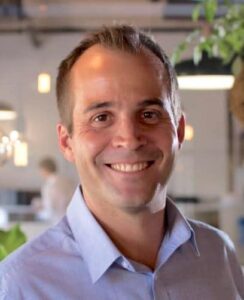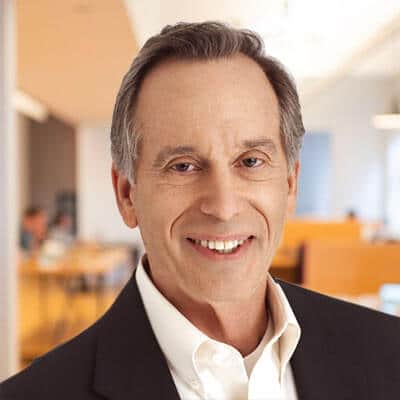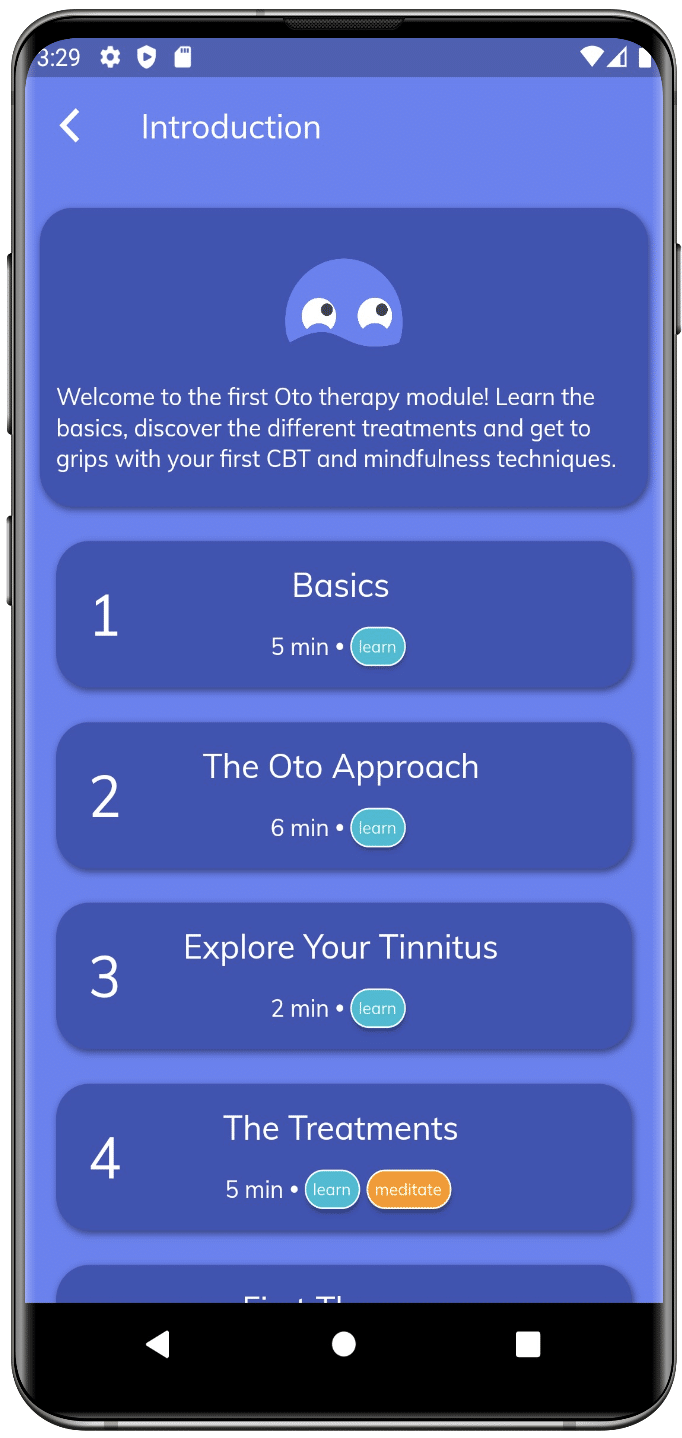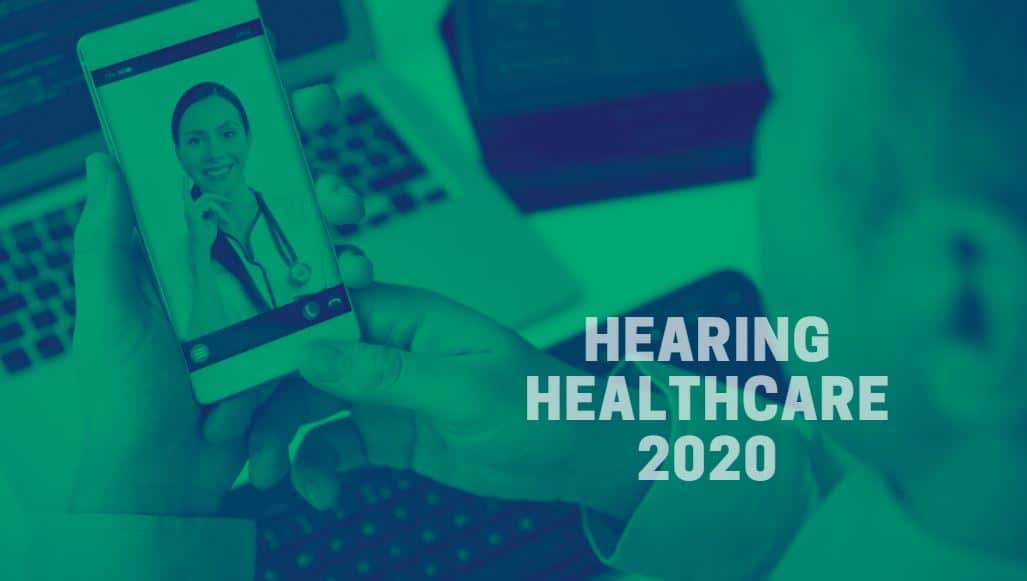Hearing Healthcare 2020 is a column where we explore the forces behind the changing landscape and disruptions impacting the hearing healthcare industry.
Without a doubt, the COVID-19 pandemic has increased our reliance on technology– not only for socializing with our friends and families via Zoom and other video chat technologies, but also has significantly increased interest and demand for remote healthcare. This week, HHTM is exploring the increasing role consumer-driven care is having on the hearing healthcare industry and what sort of changes we might expect to take place in the next few years.
HHTM President and CEO, Kevin Liebe, recently reached out to four experts at the forefront of the evolving hearing health consumer to discuss their experience and how they anticipate hearing care delivery might evolve in the coming years:
-De Wet Swanepoel, Ph.D., Professor of Audiology and Founder of hearXgroup
-David Cannington, Co-Founder, Executive Director & CMO at Nuheara
A Changing Landscape for Hearing Care Professionals Requires Changing Practices

De Wet Swanepoel, Ph.D.
The hearing health care landscape in the US has been in a state of flux for the past few years. Mounting pressure for accessible and affordable hearing care and an expanding market of baby boomers presenting with age-related hearing loss has seen a variety of consumer approaches proliferating over the past couple of years. The most well-known initiative is the OTC law signed in 2017 for a category of OTC hearing aids that fit adults with mild-to-moderate hearing loss. The FDA was supposed to issue a proposed rule by August 2020 but presumably with all the COVID-19 chaos this has been delayed. In the meantime, a number of direct-to-consumer models of hearing aid provision have continued to flourish with more consumer orientated products such as Nuheara and Eargo entering the space alongside existing players like MD hearing.
A more recent trend has seen consumer electronic companies, like Apple and Bose, starting to enter this space with technologies that enhance speech on their earphones. In the future these consumer electronic options may offer another alternative for mild and perhaps mild-to-moderate hearing loss. Seeing consumer electronics offering augmented hearing has the advantage of scalability and goes a long way towards minimizing the age-old stigma associated with traditional hearing aids.
In parallel to this increasingly crowded space, professional audiological services are having to differentiate their offering, which is typically more costly and time intensive. Consumer-focused DTC models with remote audiological support, recognized as important for post-fitting satisfaction, has also emerged as a hybrid model of care as in the case of Listen Lively. Lexie Hearing, a recent addition with remote hearing experts, provides hearing aids to price-sensitive consumers, including a subscription model, with rewards based on good hearing habits through their app-based incentive program. COVID-19 has further pressurized the audiology industry with traditional services unable to continue for the high-risk demographic of age-related hearing loss during this time. During this same period, online DTC delivery models were proceeding unhindered and, in fact, have experienced increased uptake.
Despite the above challenges, professional hearing health care services are an essential part of the care continuum and offers more than many realize. Emerging trends and the COVID-19 adversity has served to accelerate invention to accelerate innovation in the field of professional hearing care.
For one, teleaudiology, which was largely a matter of convenience and personal preference (for patients and professionals), was suddenly escalated as a matter of safety first and foremost. These advances in teleaudiology was evident in rapid deployment and upgrades to remote care apps for hearing aid fine-tuning, counselling and even in-situ audiometry. Changes like these became essential to continue some level of care for existing patients. At the same time developments to assess new patients using self test kits with tele-audiology functionality became available and incorporated into curb-side, counter-side and home-based models of care.
Also new ways to triage patients in these low- and no-touch models of care where bone-conduction testing may not be possible emerged relying simply on rapid air conduction assessments outside a booth. Furthermore, audiologists turned to online hearing screening to reach new patients with rapid, validated tools that are proven to generate referrals.
Adapting to consumer trends and innovating the way care is provided will be essential for hearing health care professionals preparing for the future. Consider the emerging trends, here are some practical pointers for hearing health professionals:
- Harness the power of digital health solutions, like the examples mentioned above, to expand service-delivery options and reach. Make this an integrated part of your growth strategy.
- Broaden your patient engagements to be more consumer-focused. This includes thinking about services outside of a conventional clinic setting. Consider diversifying and offering remote home-based concierge services or having hybrid online and face-to-face care options. This may also include supporting and offering OTC devices in the future.
- Maximize the use of an online presence to reach consumers. For example, an online hearing test, like hearDigits, is validated to be accurate and to reach more patients. It is particularly helpful in providing access after-hours, when most people take online hearing tests, without needing to have the professional available. Digital marketing should be an essential part of any modern practice.
- Probably most important. Make sure you differentiate your services by being person-centered in every aspect of your practice. There are excellent tools available by the Ida Institute to support professionals to provide comprehensive services that puts the consumer at the center of care to enable shared decision-making. This ensures that our professional services are truly personalized as a powerful differentiator directly linked to improved benefit in clients and higher rates of client retainment.
Hearing care professionals have an opportunity in the midst of this rapidly changing landscape to rethink and reinvent the way they provide care. Fortunately, there are tremendous resources at our disposal to keep hearing professionals central to the continuum of care towards better hearing in the digital age.
Evolving with the times is not an option, but in the current market has become essential to ensure readiness for a consumer-driven hearing care future.
De Wet Swanepoel, Ph.D. is Professor of Audiology at the University of Pretoria, South Africa. His research capitalises on information and communication technologies to explore, develop and evaluate innovative solutions and service-delivery models for improved access to ear and hearing care. He is Editor-in-chief of the International Journal of Audiology, past-president of the International Society of Audiology. He is also a founder and scientific advisor to the hearX group.
A Rapidly Evolving Industry

David Cannington
COVID-19 has brought forward five years of change into a short five-month period for the hearing health industry. This change was something the industry was anticipating but it had no sense that it would happen so rapidly and with so much disruption.
As people across the globe cope with lock downs and health risks when they step outside their own homes, there has been a complete reexamination of how people approach their health needs, their shopping habits and their lifestyles.
The result of this disruption is that people have been forced to stay home more and adopt technologies that allow them to reach out to the world and connect with their loved ones.
Technology is no longer just the domain of the tech savvy younger demographic. COVID-19 has forced technology onto the broader population. Grand-parents shopped online for the first-time during lockdown and had to find new ways to connect their families and executives had to learn to do deals across the globe on ZOOM calls.
I read today that a Silicon Valley VC claimed they executed their first ZOOM only investment deal. This would have been unheard of six months ago but it’s today’s reality like it or not.
In the same vein, Nuheara who is based in Perth, Australia, one of the most isolated cities in the world, recently announced a collaboration agreement with HP who has offices around the globe. This was done entirely using remote technologies which mitigated the need to meet in person.
Nuheara was even forced to get its brand new IQbuds2 MAX production line up and running in Malaysia using remote technologies because of COVID-19 induced lock downs at the production plant. Welcome to the new world.
Another example of this changed world, that I learned about while sitting on a virtual health care panel this week, was explained by the CEO of COVIU , a telehealth software platform. They saw their business absolutely explode in 7 days at the beginning of COVID-19 and had to double their team virtually overnight to handle the demand. The explosive demand for their solution hasn’t relented.
So, what does this all mean to the hearing health industry?
Firstly, the average customer of an Audiologist who is 72 years old that was happy to walk into a hearing clinic six months ago may never feel comfortable to return to the same level of face to face service they accessed pre-COVID-19.
Those same customers are more familiar now with technology and how they can use it to maintain their lifestyle and manage their healthcare needs. If they can talk with their children and grandkids on ZOOM, order groceries online and even buy consumer electronics, why can they not consult with an audiologist too?
The natural extension of this change is that consumers first instinct now is to ask, “how can I manage my health care from home?” Self-diagnosis and self-management for the first stages of their health journey is now conducted more and more from the comfort of their homes. This is a major psychological shift in consumers thinking that will have long term consequences across the whole health care ecosystem.
Technologies have now advanced to point where this self-care model is now possible in certain health care areas and hearing health is no exception. Hearing assessments and clinically certified collaboration algorithms are now being embedded in Direct-to-Consumer hearing devices like IQbuds2 MAX. These smart hearing devices can be bought online, delivered to a home and within minutes set to up to enable the consumer to enjoy a personalized hearing experience.
Other Direct-to-Consumer hearing aid companies are innovating with full-service solutions that are moving closer to a ‘virtual clinic’ experience that will continue to threaten the traditional hearing health patient/clinic model.
Further, the competitive environment for hearing clinics is no longer driven by cut price retail power houses like Costco in the USA or Specsavers in the UK, it’s from rapidly changing consumer behavior that is demanding self-control and in-home solutions.
In order to survive this disruption, I recommend hearing professionals think about the following:
- Embrace new technology platforms that bring their clinic experience to the consumers home as much as possible.
- Recognize that consumers have more time at home to evaluate their options when it comes to their hearing health. Having a compelling online presence that speaks to the consumer with a one-on-one conversational voice is critical to compete in today’s world.
- Younger people are getting used to having something in their ears and will start to think about their hearing health at an earlier stage than your existing customer base. Are you and your clinic ready to engage this new consumer?
- Consider setting up a seamless ecommerce solution on your website. Companies like Nuheara can take the complexity of logistics off the table with direct-to-consumer logistics that enables you to manage the front-end relationship while you delegate the back end to others.
- Re-examine your value proposition to the consumer. Are you in the business of selling hearing aids or are you a highly trained expert on hearing health that advises on 360-degree solutions to help consumers improve their quality of life with a range of hearing solutions that fit their personal needs?
Travelling was never my most favorite part of my job and now it’s been proven I can do business without the need to jump on a plane. That’s a revelation. So too for consumers of health care, as soon as they know they can self-diagnose and self- manage from home, they may not need to visit a clinic. That is a revelation that hearing professionals need to embrace.
David Cannington is the Co-founder, Executive Director and Chief Marketing Officer of Nuheara, an ASX listed innovative smart hearing company. David’s international career spans senior marketing and advertising roles in Fortune 1000 companies. He has spent the last 27 years in San Francisco founding, advising and operating early stage technology startups with global aspirations in both the B2C and B2B space. For the last 12 years he has been focused on growing globally two Australia hearing technology companies. David is passionate about building businesses that have a real impact on people’s lives.
COVID-19 and Teleaudiology: Moving the Needle

Harvey Abrams, PhD
One of the signature healthcare phenomena characterizing the COVID-19 crisis is the breathtaking growth in remotely-delivered healthcare. Indeed, according to the US Department of Health and Human Services (HHS), while only 14,000 beneficiaries per week received a telehealth service before COVID-19, over 10.1 million have received at least one telehealth service from mid-March through early July.
AHIP (the trade organization representing health insurance plans) reported the following staggering statistics. Compared to the same period a year ago, there has been:
- 4,347% growth in telehealth claims to private insurers
- 600% growth in telehealth and virtual visits to CVS MinuteCinics in 1st quarter of 2020
- 90,500 more telehealth claims to BCBS of Idaho between March and June of 2020 (representing more than 25% of all claims)
The telehealth market is estimated to grow 7-fold by 2025 with a market value estimated at $250 billion. Wow! But do these trends apply to teleaudiology? This is a hard question to answer as year-to-year comparative data do not exist. We do have some clues, however. We can compare audiologists’ use and intention to use teleaudiology immediately before and immediately after the onset of the crisis.
By an incredible stroke of luck (or brilliant planning), HHTM conducted a survey in February 2020, just before the national lockdown, on the general practice patterns of audiologists. Question 19 of the survey asked “Are you planning to use some form of telehealth or teleaudiology in 2020?” At the time, only 23% of the respondents indicated that they were either routinely providing teleaudiology (14%) or planning to offer this service (9%) in 2020.
About a month later, in response to the emerging crisis, Hearing Review conducted a survey to determine the specific impact of COVID-19 on audiology practices. Respondents were asked, “Is teleaudiology/telehealth part of your strategy for dealing with the coronavirus?” 59% responded in the negative because they felt such technology would not “be applicable for client base” (25%) or because they “are not equipped to do telehealth” (34%). Of those who reported that they were using or planned to use teleaudiology, most (43%) planned on limiting these services to follow-up care only. About 4 weeks later, when we were deeper into the crisis, Hearing Review conducted a follow-up survey. In response to the same question, the percentage of audiologists NOT planning on including teleaudiology as part of their coronavirus response strategy decreased from 59% to 43%.
Apparently, those who didn’t think they were equipped to provide telehealth “found a way.” That said, many of the conversions to a positive response were still limiting their services to follow-up care only. It’s entirely possible, however, that many respondents assumed that their business closure would be short-term; a survey conducted today might reveal a larger percentage of audiologists providing more comprehensive remote services.
Historically, audiologists have been reluctant to adopt teleaudiology as a major component or option for service delivery. This reluctance is in stark contrast to other healthcare disciplines who were providing remote care options prior to the COVID-19.
As early as 2015, many remote healthcare apps were available to patients and their providers. Some examples include:
These apps represent the healthcare industry’s response to the growth in the on-demand economy characterized by a desire for immediate gratification. Consumers increasingly demand that their purchases are transacted when, where, and how they want it – including their healthcare.
Where does audiology fit into this economy? With few exceptions, not particularly well. As revealed by the surveys described above, to the extent that audiologists are providing “on-demand” services, they tend to be limited to follow-up care for existing patients. While we are seeing an increase in online hearing tests, many are primarily designed as a conduit to getting prospective patients to make an appointment at a brick and mortar facility.
A few companies have emerged with a more comprehensive approach to teleaudiology including BlameySaundershears which provides for online hearing testing, online hearing aid purchasing, and online appointment booking with one of their audiologists (a hybrid model), and Lively whose “Audiologist-on-Demand” model features an entirely remotely-delivered patient journey beginning from the online hearing test, to video consultations, programming adjustments, and scheduled as well as on-demand follow-up care.
What effect COVID-19 will ultimately have on the growth of teleaudiology is difficult to predict. The limited data available from the surveys discussed earlier as well as anecdotal reports suggest that the pre-COVID model of hearing healthcare delivery will likely prevail with, perhaps, some modest modifications around the edges.
It’s possible that, given consumers’ positive experience with telehealth in general and their changing expectations of how healthcare should be delivered, audiologists who persist in a traditional brick and mortar hearing healthcare model will be placed at a competitive disadvantage. And remember… we’re still waiting on OTCs.
Harvey B. Abrams, Ph.D. is the Head of Research Audiology for Lively. In a 40+ year career, Dr. Abrams has served in a number of academic, clinical, research, and administrative capacities with the Department of Veterans Affairs, the Department of Defense, academia and private industry to include Chief of the Audiology and Speech Pathology Service and Associate Chief of Staff for Research and Development at the Bay Pines VA Healthcare System, the Director of Research at the Army Audiology and Speech Center at Walter Reed Army Medical Center, and the Director of Audiology Research at Starkey Hearing Technologies. He instructs students at several AuD programs and is a frequent lecturer on the topics of outcome measures, health-related quality of life, professional issues, and evidence-based audiologic practice. His research has focused on treatment efficacy and improved quality of life associated with audiologic intervention to include, most recently, computer-based auditory training.
Smartphone Technology as a Gateway to Care

Dr. Edmund Farrar
The coronavirus pandemic has changed life as we know it forever. We’ve been acutely aware of the negative impact COVID-19 has had on our lives, not least in the world of healthcare and medicine.
In the UK, where I have practiced as a doctor for the last 5 years, we’ve seen unprecedented delays in vital treatment for those with cancer and other life-threatening conditions. The UK charity Cancer Research has estimated that over 2.4 million people will be affected by delays in cancer care as a result of the pandemic.
Hearing health is no different, with waiting times for all audiology services growing considerably. During the peak of the pandemic many of these services were deemed non-urgent, and audiologists were re-deployed to intensive care or non-clinical areas. A higher proportion of the elderly population have hearing loss and tinnitus, and due to the combination of greatly increased risk of COVID-19 infection and reduced access to technology, accessing these services has been made particularly difficult for this age group.
Despite the obvious difficulties we continue to face as a result of the pandemic, there have been some positives. In the UK the National Health Service (NHS) has traditionally been very slow to adopt cutting edge technology. It might surprise you to believe that in many hospitals fax machines were still used to send documentation between departments up until very recently. COVID-19 has forced us to think differently. Gone is the equipment of the 90s and early millennium that often bore the brunt of the technological work in UK hospitals.
The pandemic has been the driving force in the experimentation and implementation of the latest technology, largely because previous infrastructure was so dated. Change is now required as a necessity and as remote contact becomes the norm, both provider and patient must adapt to new systems and processes.
Technology has enabled significant steps in pathways for those with hearing loss. It is now possible to buy a hearing aid directly online – probably an impossible feat in the UK a year ago. Remote clinics are becoming routine as efforts are made to reduce the face to face burden wherever possible.
Consumer hearing technology has seen incredible innovation over the last 6 months, with start-ups like Chatable Apps turning any smartphone and headphones into a functional hearing aid.
Addressing Overall Hearing Health

Oto app
Amongst the excitement and talk of progress, perhaps one condition in particular seems to be left behind. Tinnitus, a condition that is associated with–and is often as debilitating as hearing loss–is not so frequently mentioned. The lockdown and isolation has made life for people with either condition incredibly difficult, but for those with tinnitus access to help is even more limited than before.
Before the coronavirus pandemic it might take up to 6 months in the UK for people with tinnitus to wait for therapy. The mainstay for treatment is normally CBT (which holds the strongest evidence base) and less frequently tinnitus retraining therapy. Around the rest of the world (and for people that do not quality for NHS therapy in the UK) payment for private treatment would be required. This is possible over video call, but a full course of therapy will still cost well into the hundreds of pounds or dollars.
There are a number of improved offerings for tinnitus self-management. Mobile apps are improving in features and functionality, and we’ve seen the normalisation of remotely accessed therapy. But what about a new way to deliver therapy for tinnitus entirely? How can we improve access to treatment for the millions all over the world that are either unable to pay privately or wait for a virtual appointment?
This is the exact problem we aim to solve at Oto Health. We aim to revolutionise tinnitus treatment by bringing therapies directly to people’s smartphones using a simple mobile app called Oto. Oto brings together all the known effective therapies in tinnitus management into a progressive programme of cognitive behavioural therapy (CBT), targeted mindfulness, relaxation therapy and education.
Users can work through Oto’s therapy modules whilst filling in a hearing health log to see how their tinnitus improves over time. Oto harnesses the power of artificial intelligence to give you in-depth insight into users’ own tinnitus and hearing health in general, with quick and simple tracking.
Oto will allow people to instantly access tinnitus therapy from the comfort of their own home, for a fraction of the cost of private therapy.
Edmund Farrar is a medical doctor and the co-founder of Oto Health, a UK-based startup that is improving access to therapy for people with tinnitus or hearing loss using a simple mobile app, Oto. Built in collaboration with ENT surgeons and hearing therapists, Oto combines AI-powered hearing health tracking with tinnitus therapy and personalised hearing training.







